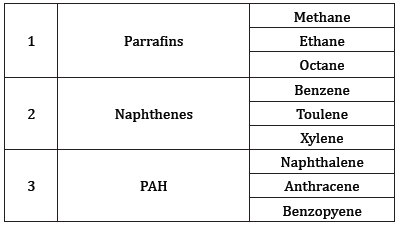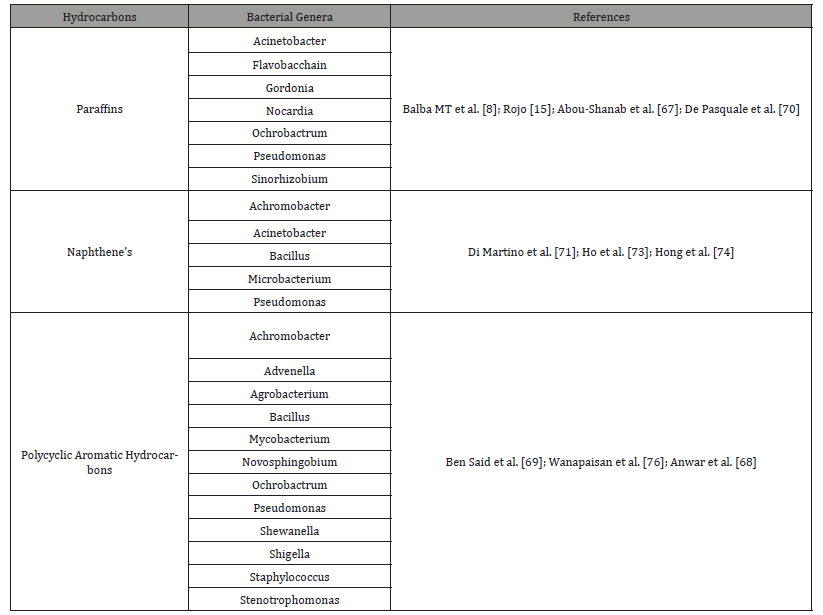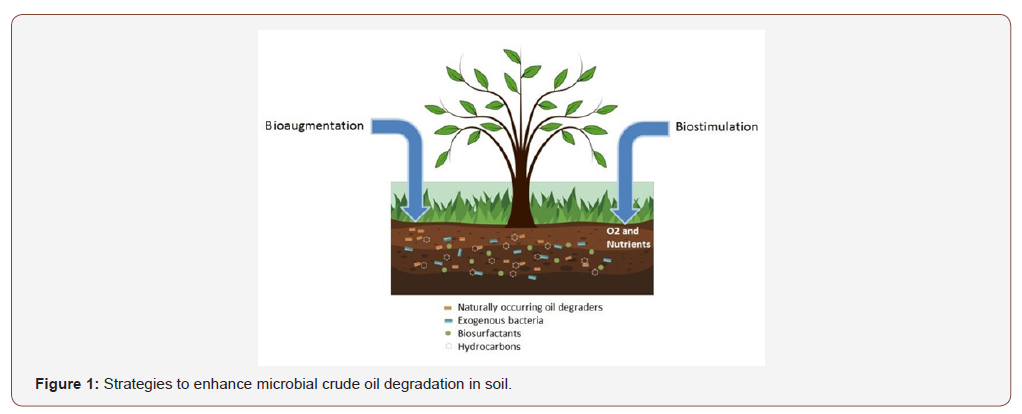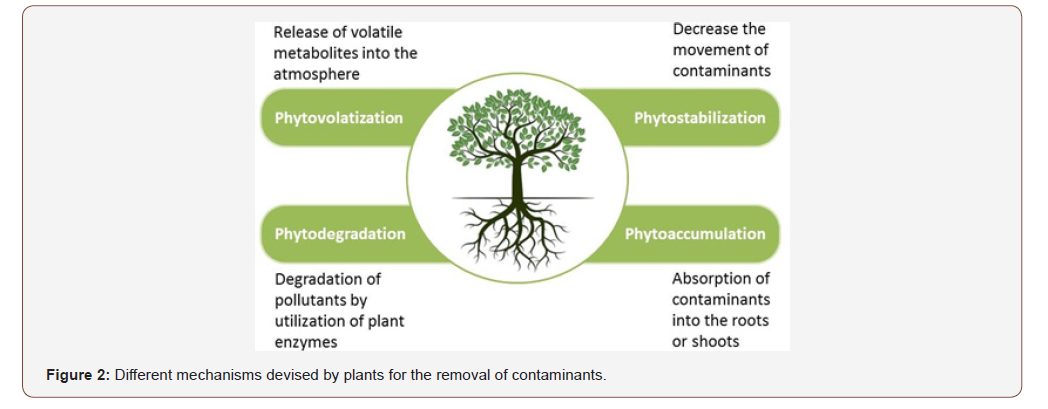Authored by Ding Xue Zhi*,
Abstract
Crude oil utilization has improved our living standard, but it has also threatened the aquatic and terrestrial environment with its harmful effects. It contains harmful substances such as polycyclic aromatic hydrocarbons (PAH) that can cause mutation and cancer. Soil contamination is of particular concern as it does not only effects human health but also vegetation growth and biological environment. Many remediation techniques have been devised but a quick, nature friendly and cost-effective method is required to remove and minimize the dangerous effects of crude oil. In this review, different remediation techniques to remove crude oil from the soil have been discussed, focusing on their current advancement. Chemical, physical and thermal methods used for the cleanup of soil have many demerits, so focus is shifted toward biological methods such as microbial remediation and phytoremediation. Recently microbes and plants are used together as rhizoremediation technique to remove contaminants from the soil because of its significant results.
Keywords: Crude oil; Polycyclic aromatic hydrocarbons; Bioremediation; Rhizoremediation
Introduction
Crude oil is a quick and easily accessible source of energy, making our life comfortable and raising the standards of living. It can be found naturally in many parts of the world, particularly in the USA, Russia, Romania, Iran, Mexico, Iraq, Saudi Arabia, Kuwait, Libya, and Nigeria [1]. The petroleum industries generate billion tons of crude oil, natural gas and its derivatives every year. All of these are then undergone further processing for the production of refined products such as diesel, gasoline, petrol and lubricants [2]. It is recorded by international energy agency that demand of oil all over the world in 2015 was 97 million barrels/day which is expected to be 100 million barrels/day up to 2021 [3].
Crude oil is composed of volatile liquid hydrocarbons with varying molecular weight and structure. It contains more than 17,000 hydrocarbons and its classification are based on the most prevalent compound present in it. The three main hydrocarbons components present in crude oil are compiled in Table 1 [4-6].
Table 1: Three main hydrocarbons components present in crude oil.

Crude oil contamination is one of the major environmental problems effecting aquatic and terrestrial environments. At present, approximately 80% of lands are affected by petroleum origin products i.e., hydrocarbons and these products are used in oil and chemical industries as energy source [7]. Crude oil makes a covering on the surface of soil and causes the retention of carbon dioxide produced by soil organisms. It also decreases the soil porosity by sticking the soil particles together. The amount of loss depends on the amount and grade of oil spilled [1].
Many accidental spillages of crude oil have threatened the nature. The largest accident in the history of mankind that caused environmental disaster is “Gulf war oil spill” (1991). This accident caused the spill of millions of gallons of crude oil from destroyed oil wells into the water and surrounding land covering 49 square km of an area [8]. Similarly, “Keystone pipeline accident” (2017) is another disaster of oil spillage. This spill caused the spread of 210,000 gallons of oil on the grass as well as in the agricultural area at southeast of the small town of Amherst in northeast South Dakota [9].
Polycyclic aromatic hydrocarbons (PAH) present in crude oil, declared as primary environmental pollutant by the United States Environmental Protection Agency are mutagenic and carcinogenic [10]. A prolonged contact time of stable PAH with soil stimulate the phenomenon called soil aging, leading to the resistant of soil to any treatment [11]. Leakage of these contaminants from the soil to the ground water can pose risk to human health, vegetation and biological environment [7]. So, it is very important to clean the soil from these harmful substances to guard life from their deadly effects. Besides, by remediating oil contaminated sites more land can be available for residence as well as agricultural activities.
Numerous countries are developing their own strategies to cope with the soil contamination done by crude oil e.g., Lebanon, Kuwait and some other middle east countries have organized oil spill working groups by the aid of environment research organizations for assessment and future remediation of the affected areas [2]. Numerous methods for the removal of crude oil from the contaminated soil have been devised. A quick, nature friendly and cost-effective method is required for this purpose. This review focuses on the current developments of some generally accepted remediation techniques used to treat crude oil contaminated soil.
Chemical Methods
Chemical oxidation is an efficient method to remove dangerous wastes from the soil at the oil spilled sites. The efficiency of this method strongly depends on the soil matrix. Fenton’s reagent, a mixture of Hydrogen peroxide and Ferric ion, is used for chemical oxidation. Hydrogen peroxide is a strong oxidizing agent that generates hydroxyl ions during Fenton’s reaction while ferric ion acts as catalyst. Hydroxyl ions are very powerful and effective agents that destroy the contaminants present in the soil [12,13] demonstrated that removal of oil from sand at lower pH by using Fenton’s reagent is much efficient than at natural pH or peat.
Another efficient oxidant that is used for the removal of crude oil from soil is ozone. It is easy to generate, store and handle for in situ treatment. Polycyclic aromatic hydrocarbons are more reactive with ozone in comparison o alkanes. Reactivity of poly aromatic hydrocarbons depends on the number of rings, heteroatoms presence or absence and alkylation level. Ozone also support microbial community present in the soil as it generates oxygen on its degradation, so it can be helpful in bioremediation method to aid microbial growth [14]. Chemical method is a quick way to treat contaminated soil, but chemicals may pose a serious threat to the nearby soil and living beings due to leaching or side reactions.
Physical Methods
Excavation of crude oil contaminated soil is the quickest and safe way but not a sophisticated and cheap method. The contaminated soil is removed and transported to appropriate landfill for the disposal. The samples are collected from bottom and sidewalls of the excavated area to check if the site is clean or not [15-17].
Another physical method is the washing of contaminated soil. Washing with organic solvents such as ethanol- water mixture and ethyl acetate-acetone-water mixture exhibited significant removal of hydrocarbons from the contaminated soil [18-20]. Soil washing does not only treat the oil contaminated soil but also remove the heavy metals from the soil. The efficiency of washing can be enhanced by the addition of surfactants. Studies showed that both artificial and natural surfactants are helpful in the removal of crude oil. Different surfactants remove different fractions of crude oil e.g. artificial surfactant sodium dodecyl sulfate (SDS) removed aliphatic hydrocarbons while natural surfactants saponin and rhamnolipid removed polycyclic aromatic hydrocarbons from the contaminated soil [21]. This method no doubt is simple and efficient, however, it is very prolonged, time consuming and very costly. Transportation of contaminated soil to disposal site is another big problem. Surfactants might be dangerous due to their possibility of adhesion to soil particles.
Thermal Methods
In Thermal stripping/low temperature thermal desorption/soil roasting contaminated soil is heated to very low temperature (200- 1000 °F) to increase the vaporization and separation of low boiling point contaminants from the soil. By this process organic contaminants can be completely or partially decomposed depending upon the thermal stripping temperature and organic compounds present in the soil. [22]. This method can remove approximately 90% of the contaminants but it is very costly and not eco-friendly.
Another way to remove crude oil from the soil is incineration. The contaminated soil is burned by using fire at high temperature (1600-2500 °F) [1]. This method is also not environmentally friendly as volatile and flammable compounds present in crude oil will cause the environment pollution.
Biological Methods
Bioremediation is a traditional method that involves the use of living organisms (bacteria, fungi and plants) to degrade harmful substances present in the environment. Bioremediation of crude oil from the soil is very efficient, cheap and environmentally friendly solution. The effectiveness of this method is depended on hydrocarbon concentration, soil characteristics and composition of pollutants [8].
PAH are the most resistant and toxic group of soil pollutants present in the crude oil. PAH get trapped in the soil pores after they enter into the soil and retained by the soil matrix. So, their removal from the soil is very difficult [23]. Bioremediation is the most suitable method to remove PAH from the soil as microbes and plant roots can access these tiny pores easily.
Microbe assisted remediation
Soil is a diverse ecosystem as it inhabits various microbial populations. The composition of naturally residing microbes change with the composition and concentration of contaminants, so only resistant consortium of microbes survives and work actively in the cleaning of polluted soil [24]. Hydrocarbon degrading microbes are extensively present naturally in the contaminated soil and breakdown complex hydrocarbons into simple form by the use of their enzymatic systems.
Different bacterial genera chose different types of hydrocarbons for the degradation (Table 2) and they can also work in both aerobic and anaerobic condition. In anaerobic condition, bacteria present in the deepest parts of the sediments use nitrates, sulfates and iron as electron acceptor to degrade the hydrocarbons. Some of the species of anaerobic bacteria belonging to genus Desulfococcus, Thauera, Dechloromonas and Azoarcus exhibit hydrocarbon degradation ability [25-26].
Table 2: Bacterial genera degrading three main groups of hydrocarbons.

While in aerobic condition, bacterial dioxygenase enzymes incorporate oxygen into carbon molecule through a series of enzyme catalyzed reactions to generate hydrocarbon with alcohol group. Alcohol groups are oxidized to aldehyde and then converted into carboxylic group by the action of other enzymes which in turn is degraded to acetyl co-A by beta oxidation [27].
The major bacterial genera that showed crude oil degrading capability are Alcaligenes, Sphingomonas, Pseudomonas, Bacillus, Nocardia, Acinetobacter, Micrococcus, Achromobacter, Rhodococcus, Alcaligenes, Moraxella, Mycobacterium, Aeromonas, Xanthomonas, Athrobacter, Flavobacterium, Micrococcus, zospirillum [1, 2,8,27- 30].
Fungal mycelium is very helpful in the degradation of hydrocarbons because of their penetration ability, it also aids in the entrance of bacteria to the deep soil. Fungal laccase, lignin peroxidase and manganese peroxidase enzymes degrade the hydrocarbons by its oxidation [31]. Crude oil degradation has been shown by some members of the following fungal genera: Candida, Stropharia, Rhodotorula, Pleurotus, Penicillium, Phanerochaete, Fusarium [8, 14, 32,27].
Microbial remediation of contaminated soil is affected by many factors such as water amount, temperature and pH of soil, concentration of oxygen, soil quality and amount of nutrients. Change in any of these factors can decrease the population of microbes and in turn decreases the bioremediation [33].
Microbial activity can be accelerated by using bioaugmentation and bio stimulation strategies. In bioaugmentation exogenous oil degrading bacteria are supplemented to enhance soil microbiota while in bio stimulation addition of nutrients, aeration and optimization of physical conditions like pH and temperature is performed. Research has shown that bioaugmentation and bio stimulation when used together effectively remediate crude oil hydrocarbons polluted soil. It has been observed that the number of exogenous bacteria decreases after sometimes because of nutrient unavailability or other abiotic factors (pH, temperature or oxygen). So, bio stimulation incorporation with bioaugmentation provided effective results in the degradation of crude oil pollutants (Figure 1) [1,23,30,34-36]. Different types of surfactants produced by many microorganisms are called biosurfactants. These biosurfactants enhance the bioavailability of hydrocarbons to the microbes and in turn increases its degradation. Use of biosurfactants producing microbes is a good bioremediation choice as this process is cheap, nontoxic with efficient degradation rate. So, researchers have turned their focus towards such microbes that can degrade crude oil and produces biosurfactants at the same time [37].

Biosurfactants from Acinetobacter sp., Bacillus subtilis A1, Pseudomonas aeruginosa, Rhodococcus erythropolis M-25, Rhodococcus ruber Em1, Pseudomonas stutzeri have been studied for their role in ioremediation [38-44].
Phytoremediation
Phytoremediation is an effective, solar driven and low-cost strategy that uses plants for the removal of contaminants from the soil of large contaminated area. Plants have the ability to grow in polluted soil by metabolizing or accumulating the harmful compounds in their roots or shoots [45].
Plants with extended root systems, minimum water requirement, adaptability to a variety of environmental conditions and fast growth rate are appropriate for this purpose [46]. Phytoremediation efficiency depends on the plant species selection, environmental conditions and rhizobacteria [47].
Analysis of soil of the Possession Island after diesel leakage in 1997 showed that area with vegetation has 10% low concentration of hydrocarbons as compared to non-vegetation area [48].
Different mechanisms are devised by plants for the removal of contaminants i.e., phytoaccumulation (absorption of contaminants into the roots or shoots), phytodegradation (degradation of pollutants by utilization of plant enzymes such as laccase, oxygenase and nitroreductase), phytovolatization (release of volatile metabolites into the atmosphere) and phytostabilization (decrease the movement of contaminants) [11,49,50] reported that two plant species i.e., Eleusine indica and Cynodon dactylon significantly eliminated some low to medium molecular weight PAH from the soil by phytoextraction process, indicating their use in the removal of PAH.
Maize plants showed enhanced biodegradation in association with Cynanchum laeve. This symbiotic relationship between maize roots and Cynanchum laeve degraded 4-6 rings PAH more efficiently than any other treatment [11].
Vetiver grass, belongs to the Poaceae family, is a perennial grass. It decontaminates the soil by extraction of PAH and other toxins from the soil and accumulating it in the roots and shoots. This plant showed negative effect on its growth and other physical activities when grown on soil contaminated with diesel [51] Mirabilis jalapa, is also considered a good candidate for phytoremediation. [52] investigated that M. jalapa can remove 41-63% of saturated hydrocarbons within 127 days when compared with natural attenuation process (Figure 2).

Similarly, ryegrass, alfalfa, tall fescue, prairie grasses, meadow fescue, yellow medick, soybeans, Gazania, Mimosa pudica, Cyperus rotundus have shown good crude oil remediation [53-60].
With all the advantages, phytoremediation also has some drawbacks i.e., it is a time-consuming process, limited remediation in high pollutants concentration and limited area of success [47].
Rhizoremediation (Plant-microbe assisted remediation- recent technology)
Rhizoremediation requires such plants that can grow in oil contaminated soil and also provide favorable environment to contaminants degrading microbes by exudates secretion or aeration. Plant-microbe strategy not only increases the metabolic activity of rhizosphere microbes, but it also improves the soil physical and chemical properties and increases microbial access to the contaminants present in the soil [56].
PAH degrading bacterial strain Rhodococcus ruber Em1 showed enhanced degradation rate when combined with Orychophragmus violaceus during the period of 175 days in a controlled environment (mesocosms). The expressions of linA and RHD like genes, coding PAH-ring hydroxylating dioxygenase, increase 3-5 times in the mesocosoms [42]. Enhanced degradation of contaminants by maize plant was observed when maize plant was provided with indigenous microbial biomass inoculum [61].
Glycine max (Soybean) plant is among those plants that exhibit hydrocarbon remediating capability. Research showed that soybean remediation of crude oil was not because of the phytoaccumulation but it was a mutual action of G. max and rhizospheric microbes. It was observed that Glycine max growth in the contaminated soil effect the total number of bacteria, amount of water, pH and organic matter quantity [62].
A study conducted on wheat plant in hydroponics condition showed that wheat seedlings eliminate more than 20% of oil from the medium, but this remediating ability enhances to 29% when grown in association with Azospirillum [63].
Bioremediation of oil contaminated soil by using yellow alfalfa in combination with Acinetobacter sp. strain S- 33 improved the remediation efficiency 39% in comparison to alone alfalfa (34%) and Acinetobacter sp. S-33 (35%). Fractional Contaminants analysis showed that plant microbe association is the most efficient strategy in the cleanup of aromatic hydrocarbons from the soil [63].
Plant growth promoting bacteria (PGPR) promote the tolerance and resistance of plants against contaminants present in the soil. Ryegrass when grown with PGPR showed increased degradation of hydrocarbons to 61.5% for 3 years when 13% TPH content was used. It was observed that low concentration enhanced the degradation and vice versa [3,64].
Crude oil after leakage gets trapped or physically bound with the soil particles; access to these micro spaces is made possible by plant roots. Roots of plants harbor microbes in the rhizosphere as well as on the surface. So, root generates a pathway for these microbes to have access to these contaminants. Once in the soil micropores, GPR increases the solubility of oil droplets by producing biosurfactants or by adhering to the surface of the oil droplets. Microbial surface membrane oxygenase’s than generate fatty acid analogues by adding oxygen atoms into PHC. In this way microbes keep on growing and degrading contaminants. Tentatively, microbes use 150mg of nitrogen and 30mg of potassium to degrade 1g of PHC [65]. Utilization of plants and microbes in collaboration is indeed a good strategy to recovery contaminated soil. It might be a long process, but it is safer and environment friendly. Further field experiments must be performed to develop good models.
Conclusion
Crude oil is a quick and easily accessible energy source found in most of the countries. Its leakage during extraction and transportation has posed danger to the environment because it contains mutagenic and carcinogenic compounds. Soil contamination due to crude oil leakage has adverse effects on human and vegetation growth so its removal is essential. Many methods have been developed to remove crude oil from the soil i.e., physical, chemical, thermal and biological. Many alterations and development have been introduced in Physio-chemical and thermal methods to enhance their efficiency and reduce their demerits. Still these methods have many drawbacks and less acceptable by the society. On the other hand, bioremediation methods are preferred because they are efficient, cheap and nature friendly. In the recent technology i.e., rhizoremediation, microbes and plants are combined together in synergistic relationship to efficiently remove the crude oil contaminants from the soil. Research has shown that rhizoremediation is more efficient than microbial and phytoremediation techniques separately.
Future Prospects
By the advancement in the biotechnology it is possible to enhance the degradation of crude oil contaminants. Genetic engineering can be used to construct such bacterial strains that contain Lin-A and RHD genes translating hydroxylating dioxygenase enzymes that are used to degrade polycyclic hydrocarbons [66-77]. Site directed mutagenesis can be used to modify amino acid sequence of the catalytic domain of related enzymes and enhancing their activity. These enzymes in its purified form can be used to remove contaminants from the soil. By using these techniques care should be given to the process because of the possibility of gene drift into the nature.
To read more about this article...Open access Journal of of Agriculture and Soil Science
Please follow the URL to access more information about this article
To know more about our Journals...Iris Publishers
To read more about this article...Open access Journal of of Agriculture and Soil Science
Please follow the URL to access more information about this article
To know about Open Access Publishers





No comments:
Post a Comment